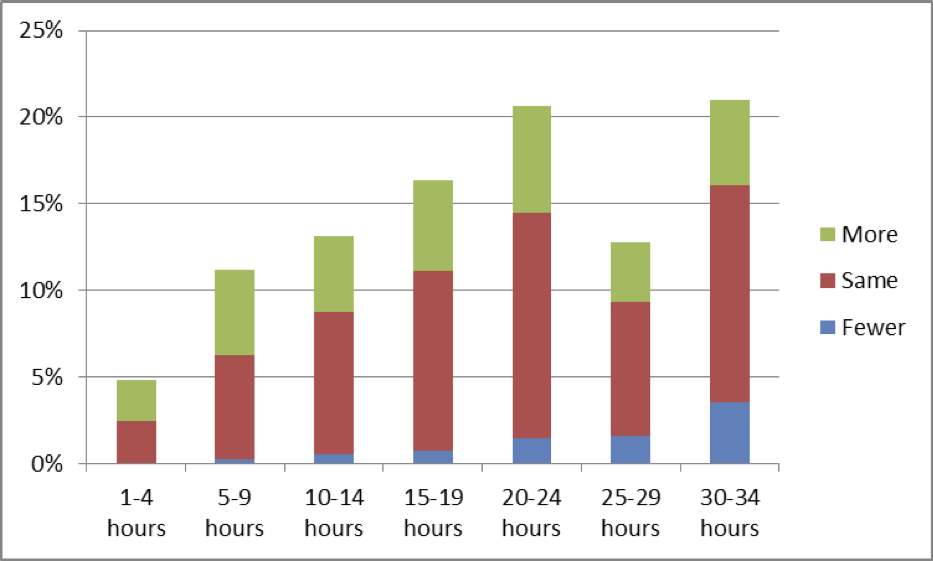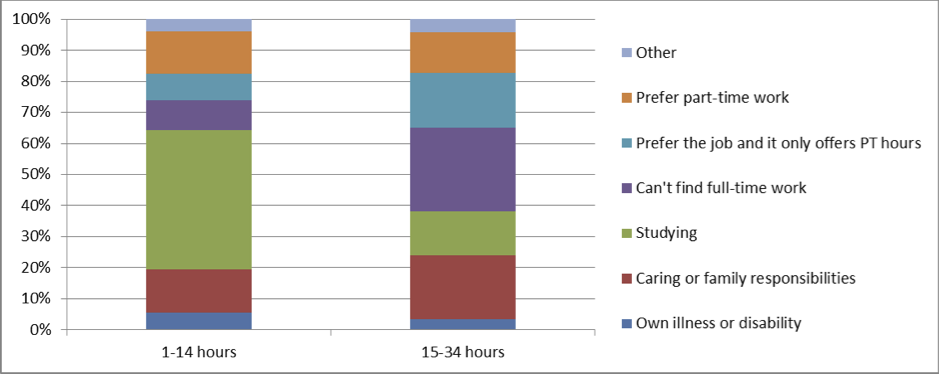A guest post today from a Canberra economist with significant expertise in analysing household dynamics, and the labour market in particular – let’s call her The Householder. She can be contacted at [email protected] *
Whenever unemployment statistics are released, there are invariably exclamations of disbelief from those whose personal experiences do not accord with their most recent movement.
If you’re of the camp who still think “My mate can’t get Newstart because the hubby/missus earns too much, so s/he’s not counted as unemployed so the unemployment percentage is rubbish”, please read Rumplestatskin’s summary of how unemployment statistics are calculated.
One of the more common complaints is that the ABS definition of ‘employed’ includes anyone who works for one hour or more in the reference week. After all, how can a person possibly provide for themselves, let alone any dependants, if they only work for one, two or three hours a week? Most of us full-time workers know that if we lost our current jobs and could only work for a few hours a week, we’d barely be better off than if we had no work at all.
This conjures up images of a primary breadwinner struggling to pay the rent or mortgage, taking whatever meagre casual work a labour hire firm can throw in his or her direction – and the ABS classifies them as employed instead of unemployed! Does this mean that unemployment statistics vastly underestimate the number of people who spend their days poring over job ads, just because they get a few hours’ casual work every now and then?
We can answer that question using data from the 2010 Household, Income and Labour Dynamics in Australia (HILDA) Survey. While the ABS underemployment and labour under-utilisation annual study uses a larger sample size (those who want to understand in more detail the slack in the labour arising in casual and part-time labour force, these ABS measures are there for your viewing pleasure), HILDA data are more detailed in some areas on worker preferences.
In short, the answer is a little bit, but not much. Over two-thirds of part-time workers work at least 15 hours (two days) per week, more than half work at least 20 hours per week, and the percentage of part-time workers who work less than five hours a week is less than 5 percent. Furthermore, most of those people who are working part time do not want more hours. The chart below shows the percentage of part-time employees by number of hours worked, and whether they would prefer to work more, fewer or the same number of hours:
So fewer than five percent of part-timers work for less than five hours per week (or about one and a half percent of the total employed), and of these, just over half do not want to work more hours. 55% of people working 5-9 hours per week do not want more hours. Only a minority of part-timers, even those only working a handful of hours, want to work more. But it’s still a substantial minority.
Shouldn’t we be concerned that these people are just picking up what work they can while desperately looking for full-time work, while still being counted as employed?
In short, no. Only ten percent of people who worked less than 15 hours a week and wanted more hours said they wanted a full-time job and this was all they could get. HILDA asks part-time workers why they work part-time instead of full-time; the chart below shows the responses of part-time workers who said they wanted to work longer hours. (Part-timers are grouped into two brackets because sample sizes get a little small when looking at detailed responses like this.)
Nearly two-thirds of people who worked less than 15 hours a week and wanted more hours were part-time because of other responsibilities in their lives – study, caring for children, elderly or disabled relatives or other family responsibilities; or their own illness or disability. In fact, people who worked 15-34 hours per week were nearly three times as likely as those on fewer hours to say they wanted and couldn’t find full-time work.
But these people still want to work more hours, right? Yes, but not much more. People working less than five hours per week who wanted more hours only wanted to work 16 hours per week on average. Those who wanted to work more than their current 5-9 hours per week wanted to work 20 on average, and those who felt their 10-14 hours per week wasn’t enough wanted 23 hours. Only five percent of people who worked for less than 15 hours per week wanted a full-time job.
So people who only work a few hours a week mostly do so because they want to; and of those that want more hours, most have other responsibilities that stop them from working full time and they only want a few more part-time hours. Assuming these proportions have not changed much since this HILDA survey was collected in 2010, this means of the 1.5% of the labour force who work less than 5 hours a week, only half (0.75% of the labour force) want to work more hours. Of these people, only 5 percent want a full-time job – well under 0.1% of the total labour force. While there are people who are counted as employed even they only work a handful of hours and are looking for full-time work, they are such a tiny proportion of the labour force that they won’t make any noticeable impact on unemployment statistics.
Finally, of note is today’s ABS release explaining the proper use and interpretation of their time-series data, where they explicitly request users of their data, and I would guess in particular the media, focus their attention on trend estimates rather than seasonally adjusted estimates that “may be misleading” and which are ‘dominated by irregular noise”.
* Note that the data referred to in the post are unit record data from the Household, Income and Labour Dynamics in Australia (HILDA) Survey. The HILDA Project was initiated and is funded by the Australian Government Department of Families, Housing, Community Services and Indigenous Affairs (FaHCSIA) and is managed by the Melbourne Institute of Applied Economic and Social Research (Melbourne Institute). The findings and views reported in this paper, however, are those of the author and should not be attributed to either FaHCSIA or the Melbourne Institute.

